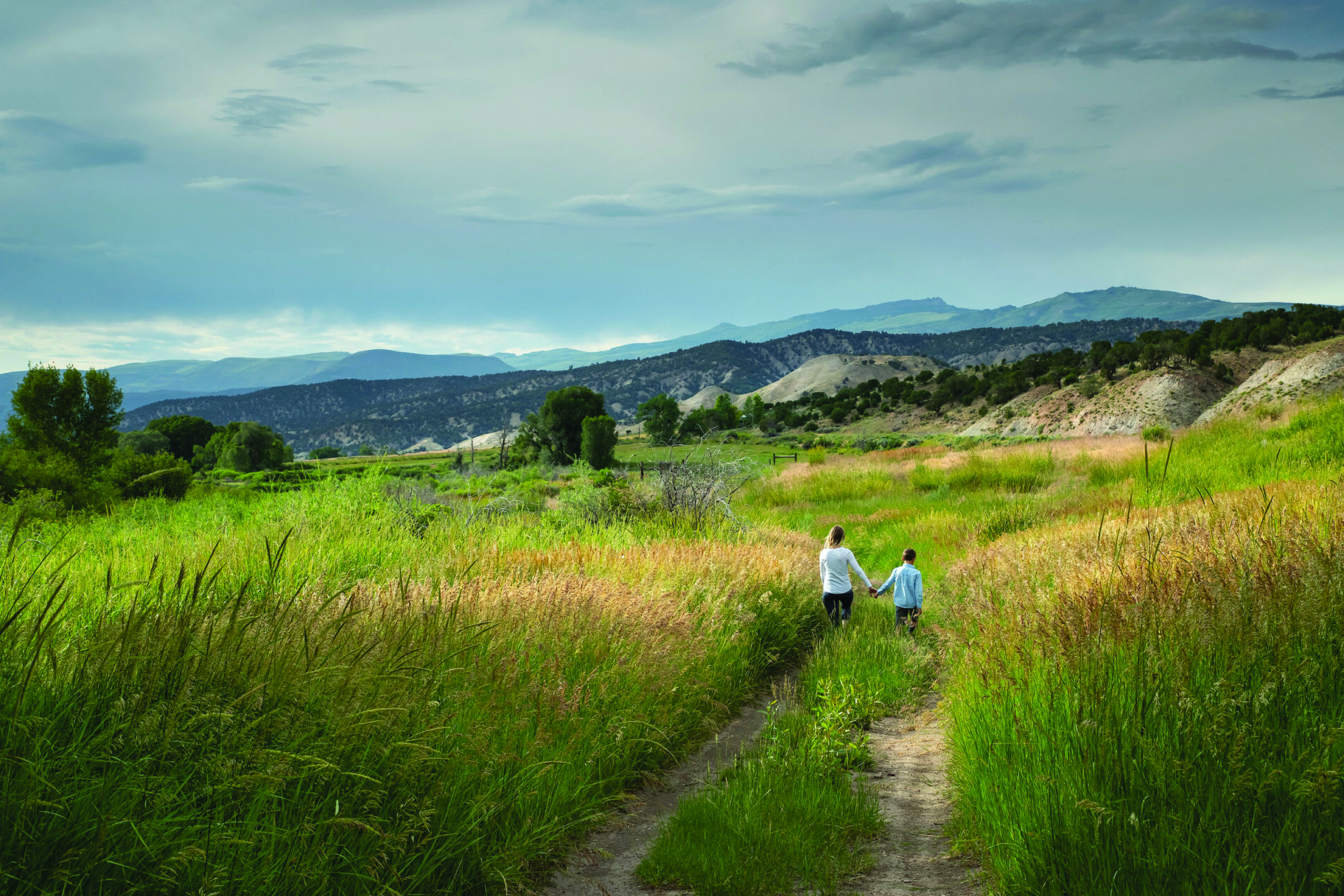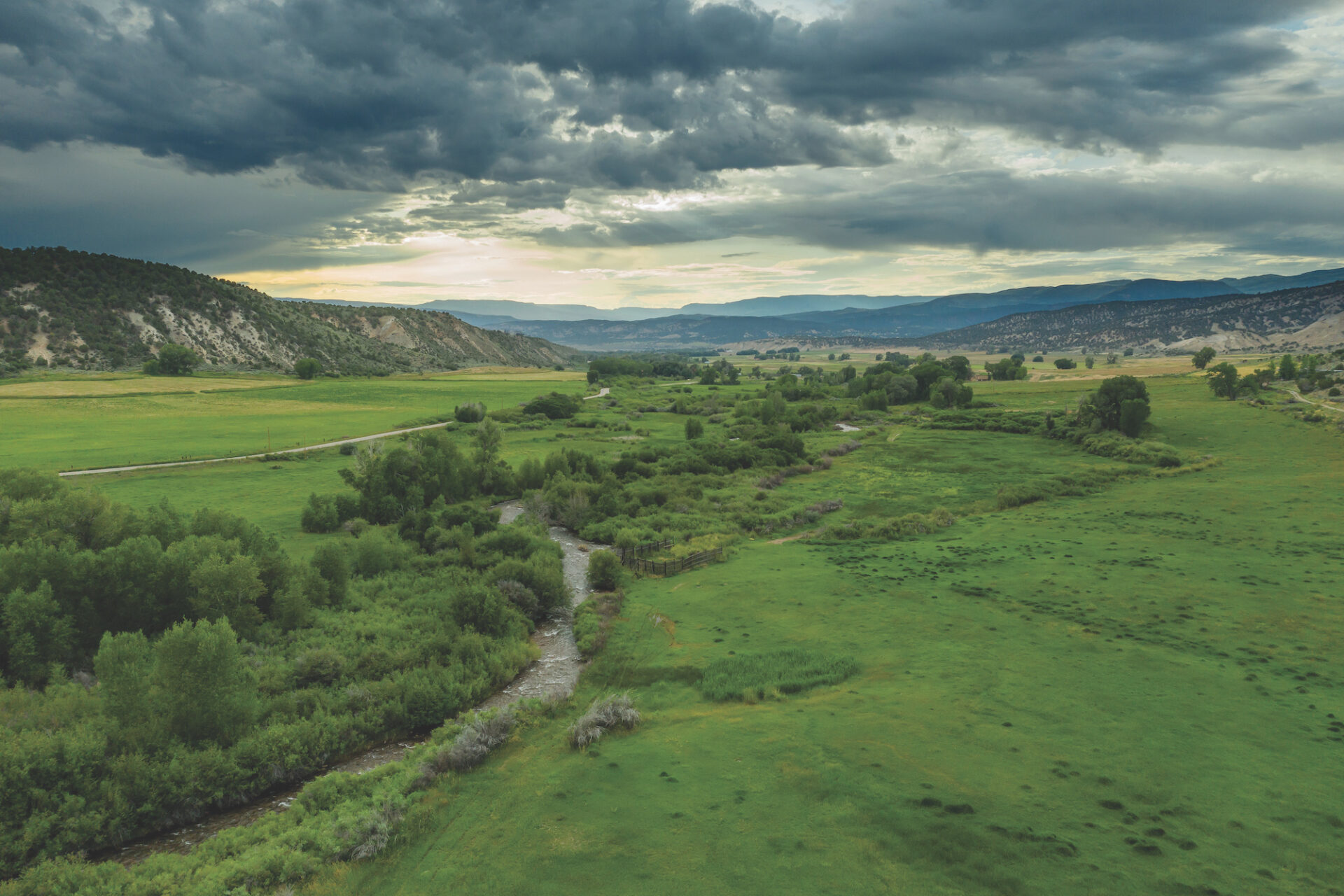Standing atop one of Vail Valley’s scenic ridgelines, it is not merely the altitude that will take away your breath. No matter the time of year, as one looks across to the spiky peaks of the Gore Range or down at the rushing Eagle River, the gorgeous vistas validate the effort necessary to enjoy them. From those elevated vantage points, one can not only gain perspective on the various geographic features, but the extent to which humans settled into this now bustling mountain community as well.

PHOTOS BY TODD WINSLOW PIERCE
From its beginnings as a summer respite for the Ute tribe to its rich ranching history to the current cosmopolitanism of two world-class ski areas, the Vail Valley has undergone tremendous growth. Development has brought plenty of benefits, but it has also altered the landscape in ways that, if unchecked, would destroy the unique splendor of the area. Condominiums, highways and chairlifts must coexist with elk herds, cutthroat schools and dense forests, which is no easy task.
It is the mission of the Eagle Valley Land Trust (EVLT) to provide a bulwark against the pressures of a growing population. Since its founding in 1981, EVLT has placed 38 parcels and more than 13,000 acres of land in Eagle County into permanent conservation. These conserved places vary widely in character, mirroring the geographic variety of the Vail Valley. One can take in the glory of the East Vail Waterfall without worrying that it will one day be crowded by new housing. Hikers and bikers abound on the West Avon Preserve when it is open for recreation and then defer to the native wildlife during the winter closure. The Gates Ranch and its vibrant agricultural heritage are protected from subdivision so that future generations can work the land in the same manner as their forebears. A full list of EVLT’s conserved parcels can be found at evlt.org.
“We are so fortunate to live and work in a place that is surrounded by nature in its many forms. I am proud to lead an organization that is dedicated to conserving these special places,” beams Jessica Foulis, the executive director of EVLT. “As is common for many Valley residents, I moved here specifically to enjoy all that this environment has to offer. I have now made it my life’s work to make sure that others will have the same opportunity.”
Leaving a legacy for the future is the guiding ethos of EVLT. “Forever is a powerful word that we use a lot in our work,” explains Foulis.
This concept is an outgrowth of the mechanism by which the parcels are protected. When a landowner decides to put their plot into conservation, they grant a conservation easement to EVLT. A conservation easement is a legal document that puts specific restrictions on the use and development of the land, which restrictions exist in perpetuity. The owner retains full ownership rights to the land, subject to the easement, while EVLT ensures that the restrictions are being upheld through yearly monitoring visits. While this is a weighty and permanent obligation for the landowner, it is counterbalanced by the benefits received, both in terms of tax credits and the satisfaction of knowing that the land will retain its essential elements forever.
Balance is another keyword and lodestar for EVLT. “There is a common misconception that we are militantly focused solely on preserving land at all costs. But, we have a realistic view of what is healthy for the Valley. Workers need places to live, infrastructure is necessary to an efficient functioning of the community. So, we have to strike a balance between conservation and development, between collective action and private property rights.”
In this vein, EVLT not only studies the land itself, but the way in which land interfaces with housing, transportation, education, waste management and other facets of life in the Valley. As the local organization focused on land, and because land literally touches everything and everybody, EVLT occupies a central place in the ongoing discussions about the future iterations of the Valley. As an organization with a timescale measured in decades and centuries, EVLT offers a unique perspective on these challenging issues.
EVLT’s work also mixes public and private interests in its alliance with Eagle County Open Space (ECOS), a governmental organizational with which EVLT is sometimes confused. “EVLT has been a great partner in terms of making sure that conservation values are protected,” enthuses Phil Kirkman, the ranger and senior natural resource specialist for Eagle County.
While both entities are focused on conserving land in Eagle County, the nature of their work is different in terms of constituencies, governance, funding and responsibilities. ECOS finances its acquisitions through a specific open space tax and is managed through the Eagle County government and its knowledgeable, friendly and steadfast employees. This results in another powerful conservation entity, one which Eagle County is lucky to have. When you are setting out to enjoy the outdoors, consider consulting the Open Space Finder map, which can be found at eaglecounty.us/openspace.
ECOS is not EVLT’s only partner; the organization works closely with many other local groups. Exposure to nature being an important component of one’s mental health, a fact that COVID rendered even more stark, EVLT has allied with Eagle County Behavioral Health on programming and policy matters. Traditionally underserved communities have many roadblocks to access to open space, a conundrum that EVLT is working with Eagle Valley Outdoor Movement and its participating entities to resolve.
Since the Valley is blessed with an abundance of land and water assets, it is only fitting that EVLT and Eagle River Watershed Council (ERWC) would team up to help protect these precious resources. An outgrowth of that link is the Land & Rivers Fund. When one visits a business participating in this program, 1% of their purchase goes directly to the Land & Rivers Fund, which then uses such funds to further EVLT’s and ERWC’s respective missions. It is a powerful way for locals and visitors alike to contribute to the long-term health of the Valley’s natural environment. A full list of participating businesses can be found at landandrivers.org.
Armed with fresh insight into the machinations of protecting Eagle County’s open spaces, the next time that you set out on a hike, ski mission or raft trip, take a moment to express your appreciation for the tremendous efforts of EVLT, ECOS, and their partners and supporters. Without these zealous advocates for conservation, the Vail Valley may very well look more like an anodyne suburb than a jewel nestled high in the Colorado Rockies.
